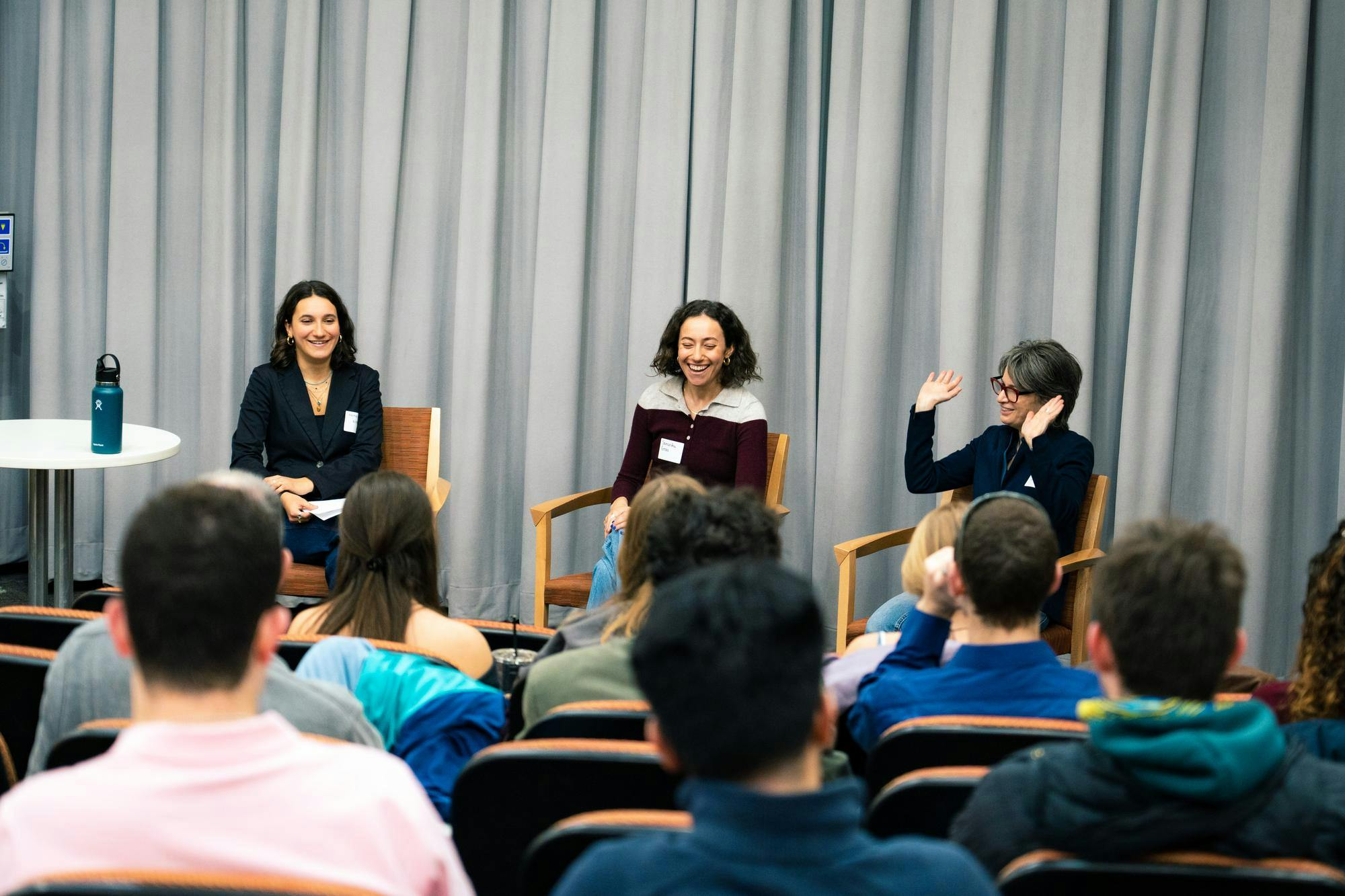Tufts Democrats held its annual symposium titled “Democrats in Motion: The Future of Progressive Policy” on April 5, featuring speakers including U.S. Sen. Ed Markey, Somerville Mayor Katjana Ballantyne, political consultant Elaine Almquist, expert political campaign organizers, reporters and Tufts political science professors across four different panels.
During a panel on political journalism, Samantha Gross, a political reporter at Boston Globe, and Rachel Slade, a former editor at Boston Magazine, shared their favorite pieces, their methods for creating quality content and how their reporting impacts communities on a local and global scale.
Gross spoke about her meaningful experience reporting on last year’s shootings at Bates College, where she went to the scene to speak with the affected families in order to understand how deeply rooted gun violence is in certain communities.
“That [story] was really emotionally difficult,” she said. “Getting people to open up is really difficult, and it was really a challenge showing up as a human first, which is always a good reminder as a journalist — at its core, you’re trying to tell people’s stories.”
Slade spoke about her reporting on the sinking of the El Faro container ship in 2015, during which she faced the challenge of writing with limited information.
“My hardest story was my first big story, which was the sinking of the container ship El Faro,” she said. “We had very little information about the ship … what happened, why did it sink. … So I had to quickly come up with a craft pitch that could actually be executed before the investigation was finished.”
When asked how to know whether or not a source is reliable in the current age of heightened polarization and inaccurate reporting, Gross believed that clarity was the most important element when combating misinformation.
“I think being transparent with your audience is always the best tool,” she said. “Everyone has an agenda.”
Slade agreed, further emphasizing the importance of being aware of journalistic bias. The preconceived notions of its writer can alter how a story is interpreted.
“Every piece of reporting has a bias. You can’t help it. I mean, we’re human beings. We’re coming in with certain predispositions,” she said.
Slade expressed concern about the rise of readers relying solely on headlines for information. She stressed the importance of captivating storytelling and the role of journalists in providing context and depth beyond catchy headlines.
“I’m not optimistic about … the lack of depth of reading that people are doing these days,” she said. “I’m not talking just about young people, as the market calls you, but just generally, I think there’s a lot of headline reading, which is really unfortunate because you don’t get the story that way at all.”
The journalists concluded their talk by offering advice not only for established journalists but also for individuals who have been looking to enter the field. Both emphasized that being proactive and being physically present when interacting with others is important.
“Show up, show up, show up. Pick up the phone to talk to people, don’t be shy. Network on LinkedIn. Reach out to people constantly and make it part of your weekly to-do list,” Slade said. “Maybe your hit rate is 10%. That means if you reach out to 100 people over, say a year … that means you have 10 new contacts.”






